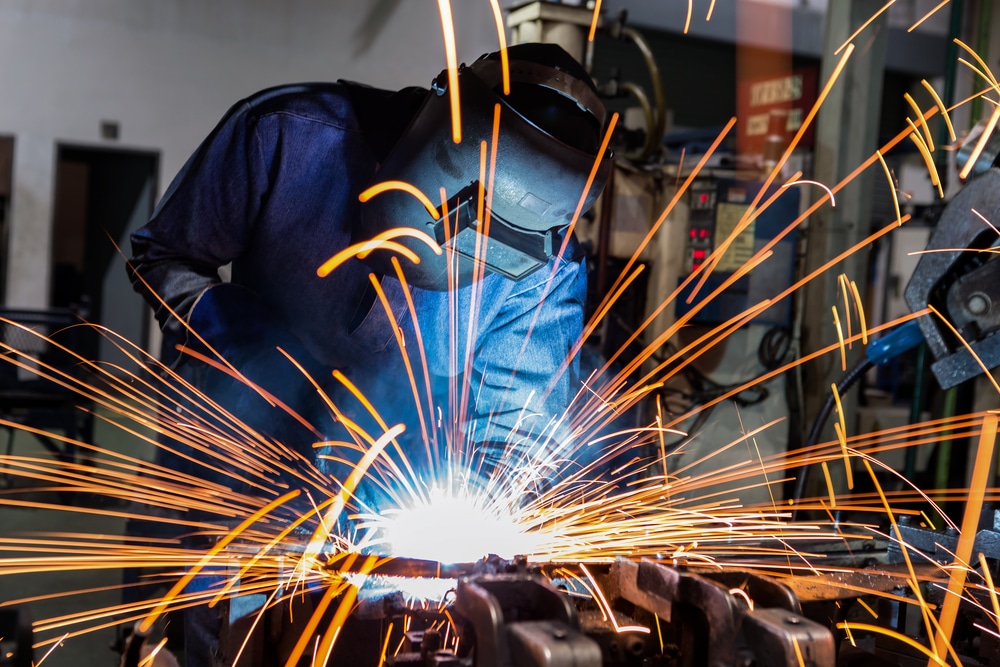What is the Difference Between Welding and Metal Fabrication?
Metal fabrication and welding are descriptive terms for related processes in metalworking. Metal fabrication is the broader term encompassing all aspects of production, while welding is a more specific term that is often an important part of fabrication.
Although the specialized skills required to perform these two functions differ, there is a good deal of overlap. Welders are often involved in other parts of the metal fabrication process such as cutting, bending, and shaping metal. Welding is itself a form of metal fabrication.
What is Welding?
Welding is the process of fusing two or more metal-based materials using high temperatures to ensure a lasting bond. It can refer to the fusion of glass and thermoplastics, but is generally understood in reference to metal. Welding can be broadly divided into fusion and solid-state varieties. Fusion welding requires an additive filler under high-heat to facilitate joining, while solid-state welding does without the filler.
More specific types include:
- Arc Welding – This is the most common and an inexpensive option where an electric current produces the heat necessary to weld. Subtypes include flux cored arc welding for thick plate welding, submerged arc welding to prevent splashing, and stick-shielded arc welding as the most portable option.
- Metal Inert Gas Welding (MIG) – Using an inert gas like argon, two sections of milder metals such as aluminum can be fused. This form of welding provides the most consistent results, and is one of the easiest to perform.
- Tungsten Inert Gas Welding (TIG) – The most time consuming option, it is best suited to industrial applications where thick sections of non-ferrous materials such as stainless steel need to be fused. Here a tungsten electrode is used to produce the heat required, and creates little to no splatter.
- Resistance Welding – Useful for fusing extremely thin pieces of metal, as little as 0.1 mm.
- Thermit Welding – Allows for the rapid fusion of dissimilar metals without a power supply, instead relying on the exothermic chemical reaction of thermite.
Depending on the application, the most suitable form of welding will vary. In addition, the preparation for welding requires cleaning of the edges to be fused and careful spacing for a solid bond. As such, an experienced welder is a highly specialized role essential to the metal fabrication process.
What is Metal Fabrication?
Typically involving significantly more operations than just welding, metal fabrication applies to more complex projects. Fabrication encompasses all aspects of production, from design to the final product, and may or may not include welding to achieve the desired result. While simpler projects may require little more than an experienced welder, greater complexity will mean a broader skill set is needed.
Metal fabrication begins with the design and planning of a metal product. A metal fabricator must consider all tools and techniques available to maximize efficiency and minimize cost.
While the process will vary between a metal bowl and a race car chassis, the principles are the same. Raw materials are cut with shears or laser assistance to sizes suitable for the project. These pieces can then be shaped into a useful form and prepared for assembly.
At this stage, welding is often the essential step in bringing everything together, but is just a single step in the overall process of metal fabrication.
Considerations When Choosing Between Metal Fabrication and Welding
For projects like repairs and reinforcement, welding may be all that is required to achieve the desired result. A welder can mend broken metal, seal a ruptured tank, or add plating to an inadequately protected area.
For projects requiring additional processing, however, metal fabrication will be the way to go. A metal fabrication shop offers an assortment of tools to manipulate metal in a myriad of additional manners. This opens a great deal of possibilities for metal production not available to welding alone.
Contact Tallmadge Spinning & Metal to discuss your metal fabrication needs and get a custom quote!
Request a Quote to Get Started
From research and development to final production, Tallmadge Spinning & Metal is your partner for cost-effective and superior metal products. Request a quote today to get started.
REQUEST A QUOTE TODAY TO GET STARTED


